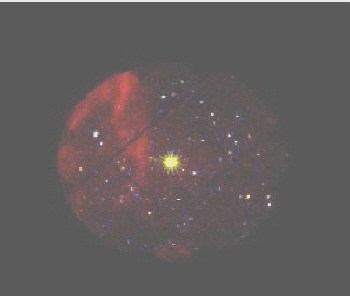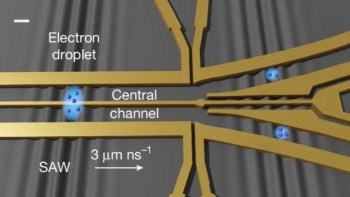Astronomers in Italy and France have directly measured the magnetic field of an isolated neutron star for the first time. Giovanni Bignami of the University of Pavia and the CESR laboratory in Toulouse, and colleagues at the IASF Institute in Milan, calculated a value of 8 x 1010 Gauss for the field, which is between 50 and 100 times weaker than expected. The results could provide important insights into the formation and surface composition of neutron stars (G Bignami et al. 2003 Nature 423 725).

Isolated neutron stars are highly magnetized, rapidly rotating objects that are formed by the collapse of massive stars. Although they are typically only about 10 kilometres across, neutron stars are at least 40% heavier than the Sun. This means that their core density is higher than that of an atomic nucleus.
Bignami and colleagues studied the young neutron star 1E1207.4-5209 using the EPIC camera on board the XXM-Newton observatory. They analysed the X-ray photons emitted from the star and found three distinct spectral lines at 0.7, 1.4 and 2.1 keV, and a fourth weaker line at 2.8 keV.
The Italian group believes that spectral lines are caused by the cyclotron resonance effect. “Electrons at the surface of the neutron star spiral around inside the star’s magnetic field, and in doing so they absorb photons of a well-defined energy,” Bignami told PhysicsWeb. “This energy is directly related to the value of the magnetic field of the star.”
Bignami adds that neutron stars contain exotic states of matter that cannot be reproduced in the laboratory, which means that they can help physicists to understand how neutrons are held together in atomic nuclei. The team also plans to look at more objects like 1E1207.4-5209. “One is good but it is better to have ten,” said Bignami.



